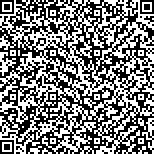Archive > Volume 45 Issue 12 > 2019,45(12):1680-1690. DOI:10.7519/j.issn.1000-0526.2019.12.005 Prev Next
Evaluation of IMERG and TMPA Precipitation Datasets over Summer MidEastern China
- Article
- Figures
- Metrics
- Preview PDF
- Reference
- Related
- Cited by
- Materials
Abstract:
Based on the observations from 500 quality-controlled rain gauges, the applicability of the tropical rainfall measuring mission (TRMM) multi-satellite precipitation analysis (TMPA) and integrated multi-satellite retrievals for global precipitation measurement (GPM) mission (IMERG) products to the precipitation in mid-eastern China during the summer of period 2014-2016 was analyzed, from the aspects of spatio-temporal distribution patterns, regional factors, rainfall intensities, and diurnal cycles. Statistical analysis showed that TMPA and IMERG have the similar daily variations of rainfall compared to gauge observations, and the mean errors are much smaller for IMERG. IMERG exhibits much stronger linear correlations (>0.9) with rain gauge observations than TMPA (0.8) at the daily scale. IMERG shows superior skill in estimating light rainfall (< 4 mm·d-1) and detecting light precipitation events, compared with TMPA over both plain and mountain regions. However, no clear improvement is found in detecting heavy rainfall events over mountain regions. For precipitation diurnal cycles, TMPA underestimates the early morning rain intensity and rain frequency, but overestimates those in the late-afternoon. As a high spatio-temporal precipitation dataset, IMERG performs well over mid-eastern China, and can be applied in meteo-rological and hydrological models in the future.
Keywords:
Project Supported:
Clc Number:


Mobile website









